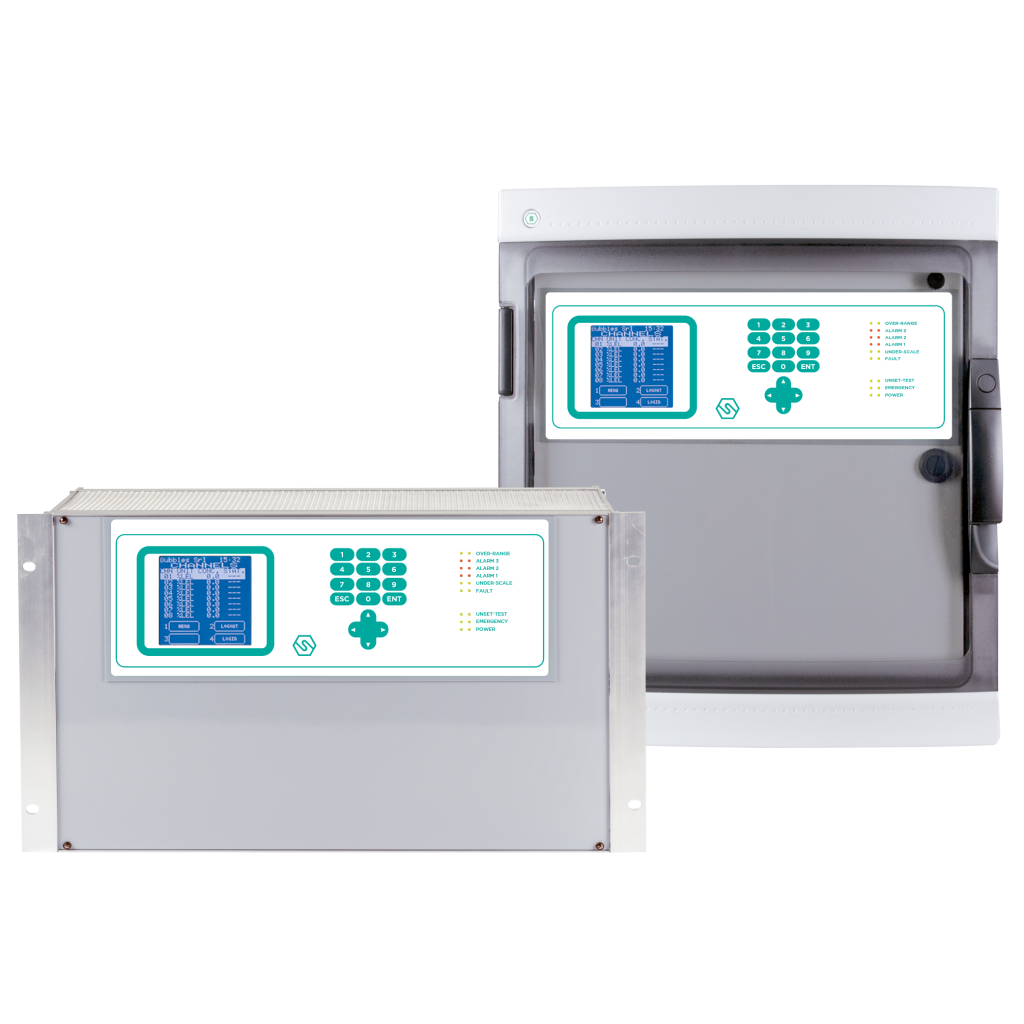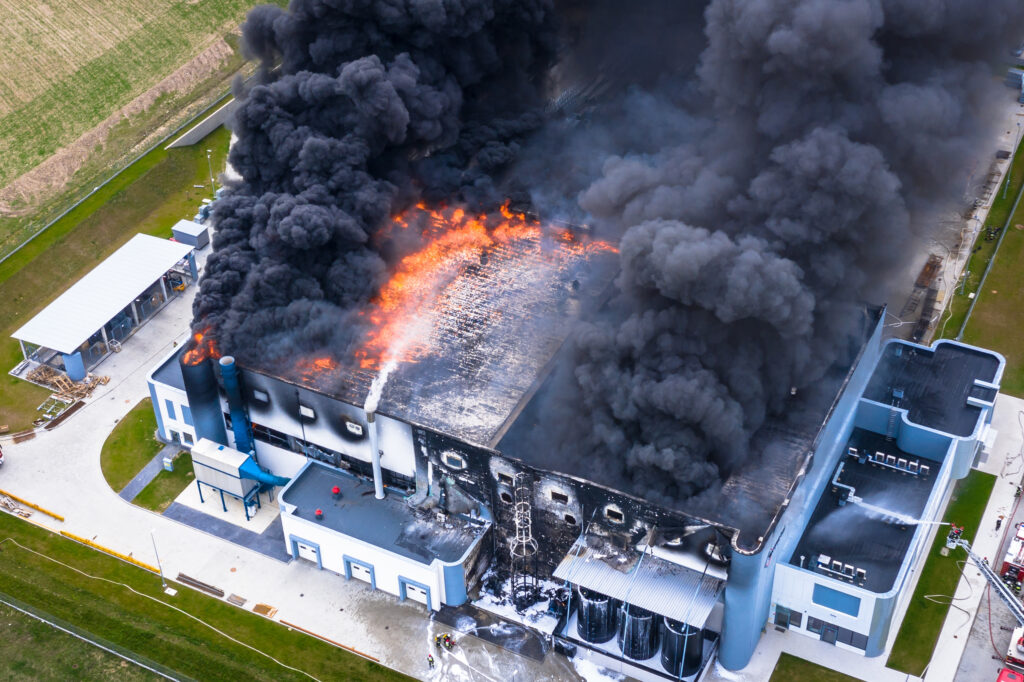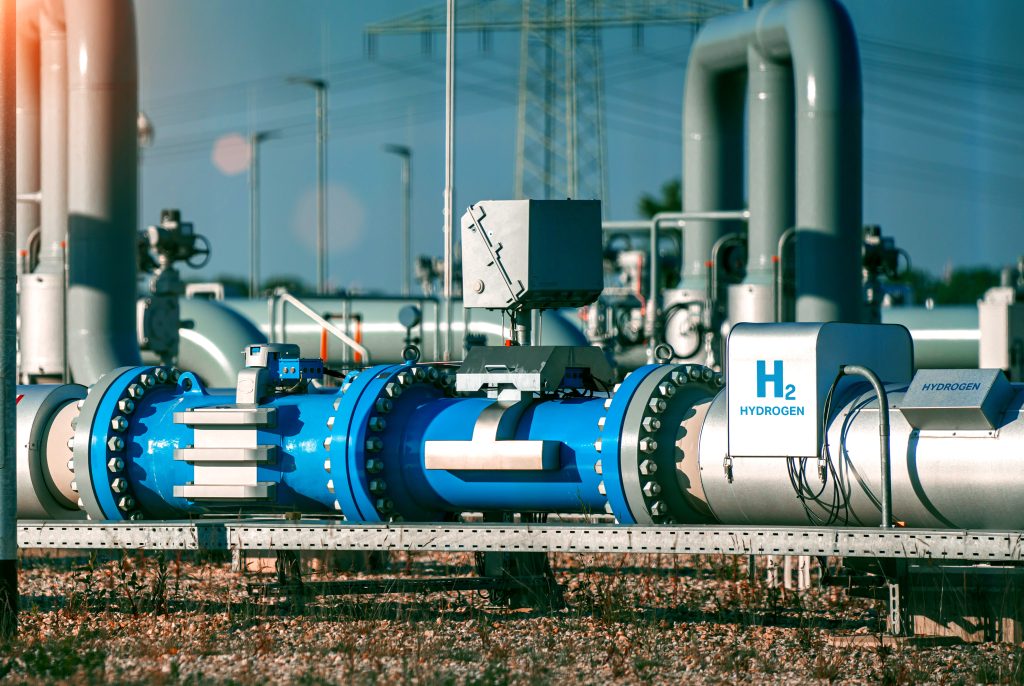
Odnawialne źródła energii
Od energii wodorowej po systemy magazynowania energii w akumulatorach - cieszymy się zaufaniem w całym sektorze energii odnawialnej, aby zapewnić bardziej ekologiczną przyszłość energetyczną.
ZABEZPIECZENIE BARDZIEJ ZRÓWNOWAŻONEJ PRZYSZŁOŚCI
W miarę odchodzenia od uzależnienia od paliw kopalnych, energia odnawialna, taka jak baterie i wodór, będzie odgrywać coraz ważniejszą rolę w naszej przyszłości energetycznej. Jednak wraz ze wzrostem wykorzystania tych źródeł energii wzrasta ryzyko związane z bezpieczeństwem, takie jak odgazowanie i ucieczka termiczna akumulatorów litowo-jonowych oraz łatwopalny charakter wodoru, co sprawia, że rygorystyczne podejście do wykrywania gazu ma zasadnicze znaczenie dla zapewnienia bardziej zrównoważonej przyszłości.
HYDROGEN
Od pracy jako substytut paliw kopalnych w przemyśle ciężkim po zasilanie pojazdów, wykorzystanie i potencjalne zastosowanie wodoru jako źródła energii stale rośnie. Jednak jego wysoce łatwopalny charakter oznacza, że bezpieczeństwo musi koncentrować się na wykrywaniu wycieków, aby zapobiec ryzyku pożaru lub wybuchu. Od produkcji po magazynowanie i dystrybucję, każdy etap łańcucha dostaw energii wodorowej ma obszary podatne na wycieki, dzięki czemu szybkie i niezawodne wykrywanie gazu ma ogromne znaczenie dla ochrony tej rozwijającej się branży.
Czysty i odnawialny
Wodór podczas spalania wytwarza jedynie parę wodną, dzięki czemu jest paliwem bezemisyjnym.
Zmniejsza zależność od paliw kopalnych
Pomaga przejść na gospodarkę niskoemisyjną, zmniejszając zależność od ropy i gazu.
Wszechstronność
Od ogniw paliwowych w pojazdach po wytwarzanie energii elektrycznej i procesy przemysłowe, wszechstronność energii wodorowej stanowi wielką obietnicę dla bardziej ekologicznej przyszłości.
Magazynowanie czystej energii
Nadmiar energii odnawialnej można przekształcić w wodór za pomocą elektrolizy, przechowując go do późniejszego wykorzystania, pomagając zapewnić stałe, zrównoważone dostawy energii.
Zagrożenia związane z gazowym wodorem
Wodór ma niską energię zapłonu i może łatwo zapalić się w obecności utleniacza, co czyni go wysoce łatwopalnym. Z zakresem palności pomiędzy 4%-74% obj. w powietrzu, nawet wycieki niewielkich ilości wodoru stwarzają znaczne ryzyko pożaru i wybuchu.
W całym łańcuchu dostaw wodoru największe ryzyko wycieków wodoru występuje w momentach transferu, gdzie istnieje największa szansa na błąd ludzki. Rozwiązania ochrony osobistej podczas poruszania się po zakładzie lub pracy w ograniczonych przestrzeniach, w połączeniu ze stałymi detektorami gazu, zapewniają najlepszą możliwą ochronę przed zagrożeniami związanymi z wyciekami wodoru.
Wodór jest bezbarwny, bezwonny i pozbawiony smaku, co utrudnia wykrycie wycieków bez specjalistycznych czujników. Zaawansowane narzędzia do wykrywania gazu są niezbędne do szybkiej identyfikacji wycieków, ponieważ wodór jest nie tylko wysoce łatwopalny, ale może również wypierać tlen w zamkniętych przestrzeniach i powodować uduszenie.
W zamkniętych przestrzeniach wodór może wypierać tlen, prowadząc do ryzyka uduszenia. Właściwa wentylacja ma kluczowe znaczenie w obszarach, w których wodór jest używany lub przechowywany. Obecnie norma ISO 22734-1:2019 określa, że system wykrywania gazu wodorowego, który inicjuje wentylację przy 0,4%v/v (100%LEL) wodoru, musi być zainstalowany w pobliżu generatora wodoru. W związku z tym detektor gazu powinien być wyposażony w wyjście przekaźnikowe uruchamiające system wentylacji, gdy poziom wodoru w powietrzu przekroczy 0,4% v/v.
BEZPIECZEŃSTWO BATERII
Zapewniając czystszy sposób wytwarzania i magazynowania energii, zasilanie akumulatorowe ma szansę stać się wiodącym elementem naszego bardziej ekologicznego krajobrazu energetycznego. Od pojazdów elektrycznych po bateryjne systemy magazynowania energii (BESS), baterie odgrywają coraz ważniejszą rolę w naszej przyszłości energetycznej. Jednak każda technologia akumulatorów, od mechanicznej po elektrochemiczną, wiąże się z ryzykiem, takim jak ucieczka termiczna, co sprawia, że wykrywanie wczesnych sygnałów ostrzegawczych, takich jak odgazowanie, ma kluczowe znaczenie.
Magazynowanie zielonej energii
Baterie magazynują energię ze źródeł odnawialnych, takich jak energia słoneczna i wiatrowa, zapewniając dostępność energii nawet przy niskim poziomie wytwarzania.
Stabilność sieci
Pomaga zrównoważyć podaż i popyt poprzez łagodzenie wahań w produkcji i zużyciu energii.
Redukcja emisji
Magazynując i uwalniając czystą energię, akumulatory zmniejszają zależność od paliw kopalnych, redukując emisję gazów cieplarnianych.
Skalowalna moc
Baterie są elastyczne i mogą być skalowane do różnych zastosowań, od małych urządzeń po duże systemy sieciowe, i zapewniają zasilanie w odległych lub poza siecią lokalizacjach.
Zagrożenia gazowe związane z akumulatorami
Akumulatory chemiczne, w szczególności kwasowo-ołowiowe i niklowo-kadmowe, mogą emitować niebezpieczne gazy podczas ładowania i rozładowywania.
Tradycyjne akumulatory kwasowo-ołowiowe wytwarzają wodór podczas ładowania. Akumulatory te są zwykle ładowane razem, czasami w tym samym pomieszczeniu lub obszarze, co może generować ryzyko wybuchu, zwłaszcza jeśli pomieszczenie nie jest odpowiednio wentylowane.
W przypadku akumulatorów litowo-jonowych i litowo-metalowych uszkodzenie obwodu zabezpieczającego akumulatora lub uszkodzenie samego ogniwa może prowadzić do niebezpiecznego niekontrolowanego wzrostu temperatury, co może skutkować katastrofalnymi uszkodzeniami w wyniku pożaru i wybuchu.
Elektrolit w akumulatorze litowo-jonowym jest łatwopalny i zazwyczaj zawiera heksafluorofosforan litu (LiPF6) lub inne sole litowe zawierające fluor. W przypadku przegrzania, elektrolit wyparuje i ostatecznie zostanie uwolniony z ogniw akumulatora.
Naukowcy odkryli, że komercyjne baterie litowo-jonowe mogą emitować znaczne ilości fluorowodoru (HF) podczas pożaru, a wskaźniki emisji różnią się w zależności od typu baterii i poziomu naładowania. Fluorowodór może przenikać przez skórę, wpływając na głębokie tkanki skóry, a nawet kości i krew. Nawet przy minimalnej ekspozycji, ból i objawy mogą nie wystąpić przez kilka godzin, do tego czasu uszkodzenia są ekstremalne.
Produkty na zagrożenia związane z wodorem i akumulatorami
Monitory przenośne
Monitory stacjonarne
Panele sterowania
CO NOWEGO
Chcesz porozmawiać z ekspertami?
Nikt nie rozumie lepiej niż nasz zespół, jak ważne są odpowiednie rozwiązania w zakresie wykrywania dla Ciebie i Twojego zakładu. Dlatego zawsze jesteśmy pod ręką, aby porozmawiać z Tobą o Twoich potrzebach w zakresie wykrywania gazu, aby upewnić się, że jesteś wyposażony w dokładnie takie narzędzia, które zapewnią bezpieczeństwo Twoim ludziom i mieniu.
Przeczytaj o polityce prywatności Crowcon Polityka prywatności i plików cookie tutaj. Jeśli zmienisz zdanie, możesz zrezygnować z subskrypcji w dowolnym momencie

















